Thai aubergines are related to our familiar deep purple vegetable with an extraordinary appearance and taste. The culture, on the other hand, is relatively similar for all aubergines.
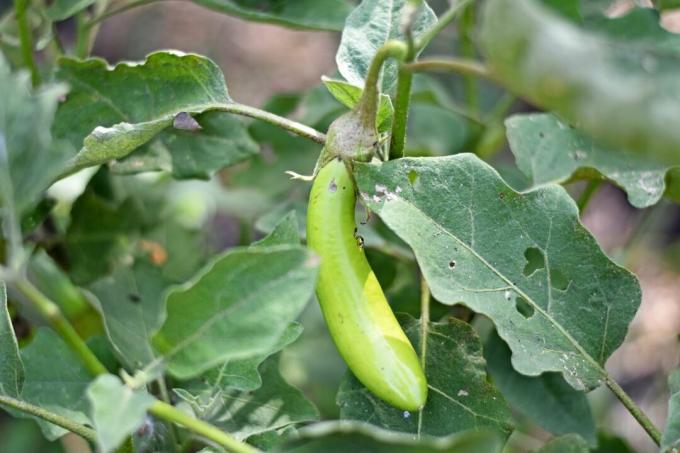
Is there room in your garden for a new, exotic vegetable? Then find out more about the cultivation of the Thai aubergine here - from cultivation, planting and care to harvesting and using the special vegetable.
contents
- Thai eggplant: origin and properties
- Plant Thai eggplants
-
The right care
- Water and fertilize
- max out
- Common diseases and pests
- wintering
- Harvesting and using Thai eggplants
Thai eggplant: origin and properties
Various plants from the genus are called Thai eggplant solanum designated:
- On the one hand there are some varieties of the ones we know aubergine (Solanum melongena), which are mainly used in Thai cuisine and are therefore called Thai eggplant.
- However, the type Solanum virginianum, synonym: Solanum xanthocarpum referred to by some as the Thai eggplant. In Asia, however, this plant is more commonly known as Kantakari and Yellow Fruit Nightshade in English.
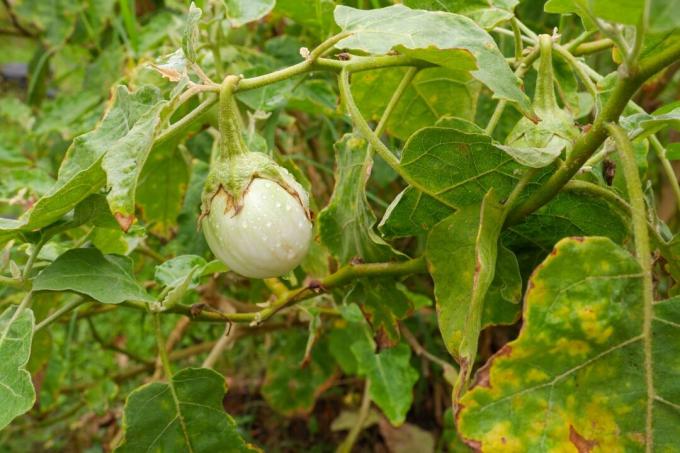
at Solanum virginianum It is a mostly annual vegetable with round, yellow-green, golf ball-sized fruits. As the name suggests, the plant originally comes from Southeast Asia, where it is often found near bodies of water. Solanum virginianum grows herbaceous, bushy and can reach a height of up to 80 cm. The stalks and leaf veins of the approximately 5 by 10 cm large, lobed leaves are covered with thorns.
With us blooms Solanum virginianum around July. Then the purple flowers attract numerous insects. The small fruits develop from the flowers, which are still rich in bitter substances until they are ripe and are therefore slightly poisonous. Even if the plants are still little known to us, Thai eggplant seeds can already be purchased.
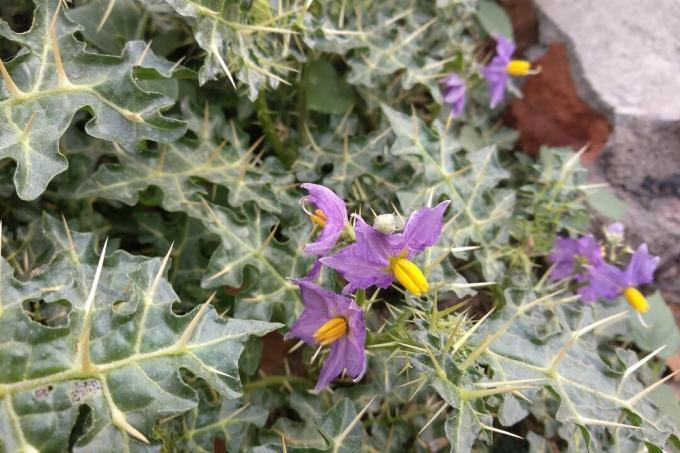
Tip: If you have the opportunity to overwinter the plant in a bright, warm place, you can keep the mini Thai eggplant alive for several years.
In the varieties of Solanum melongena, which are called Thai aubergines, are usually somewhat more unusual varieties that do not necessarily look like aubergines at first glance. For example, 'Thai White Ribbed' with flat, round, shiny, porcelain-colored fruits or 'Thai Long' is special Green' with about 30 cm long, partially curved, green fruits with an intense, slightly sweet taste eggplant flavor.
Further eggplant varieties we present in our overview.
Plant Thai eggplants
The procedure for growing and planting Thai aubergines is very similar to that of normal aubergines. You can find more detailed instructions and other tips in our article on the Planting Eggplants.
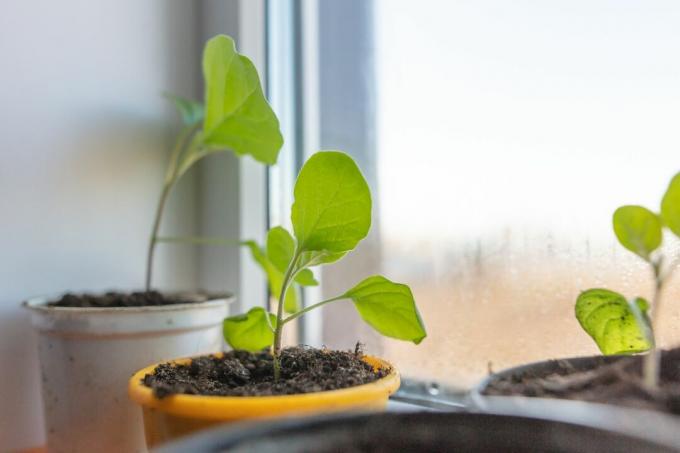
Since Thai aubergines also need a lot of warmth and cannot go outside until mid-May, indoor cultivation is recommended from March to early April. Proceed as follows:
- Fill small pots with a low-nutrient potting soil, such as ours Plantura Organic Herb & Seed Soil, which you have already slightly moistened.
- Then stick a Thai aubergine seed about 1 cm deep into the soil for each seed pot.
- Now moisten everything well again and place the pots in a bright and warm place at around 20 to 25 °C. A mini greenhouse or covering the pots ensures higher humidity and warmth.
- When the seeds have germinated after 1 to 3 weeks, they should continue to be cultivated warm and with regular watering until the first true leaves appear after the cotyledons.
- Now the young plants can be transplanted into slightly larger pots that already have a nutrient-rich substrate such as ours Plantura organic tomato & vegetable soil are filled. It covers the high potassium requirement of the aubergine and is generally adapted to heavily consuming vegetable crops.
Tip: Thai aubergines have a high water requirement right from the start of their development. Therefore, they should be watered regularly but carefully. It is best to pour them over the coaster. If the soil surface is constantly moist, aubergines are susceptible to damping-off, which is caused by fungal pathogens.

Plantura organic tomato & vegetable soil
Organic, peat-free & climate-friendly:
For all types of vegetables and berries,
ensures a rich and aromatic harvest, harmless to humans and animals
After the ice saints, in mid-May, the Thai aubergines can be planted in their final location. This should have sandy, moist, neutral to slightly acidic soil and, above all, be sunny and warm. Even at night, temperatures must not fall below 15 °C. Therefore, cultivation in a greenhouse, polytunnel or under crop protection nets is a good idea. The warmer temperatures during the night and the higher humidity result in better fruit set. Since Thai aubergines are heavy feeders, it is advisable to mature compost or, for example, ours before planting Plantura organic tomato fertilizer to incorporate into the ground. Thanks to its long-term effect, this fertilizer, which is also completely animal-free, supplies your aubergines throughout the growing season. Keep a distance of 50 to 60 cm when planting out.
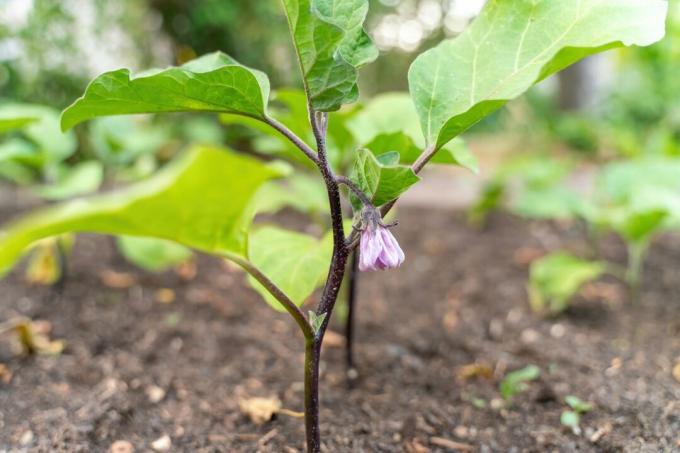
Tip: When choosing a location, you should also crop rotation and mixed culture are observed. In the case of aubergines, a cultivation break of 4 years must be observed in relation to all other nightshade plants such as tomatoes, peppers and potatoes. Thai eggplants can be grown well together with garlic (Allium sativum), carrots (Daucus carota subsp. sativus) or marigolds (Calendula officinalis).
Planting Thai aubergines in tubs is quite possible. Make sure you have a sufficiently large planter with a volume of at least 10 liters and drainage holes in the bottom. It can, for example, with our Plantura organic tomato & vegetable soil be filled. Like all our soils, it does not require any peat and is therefore significantly more sustainable than conventional substrates. Tubs with aubergines are best placed in front of a warm, sunny house wall facing south.
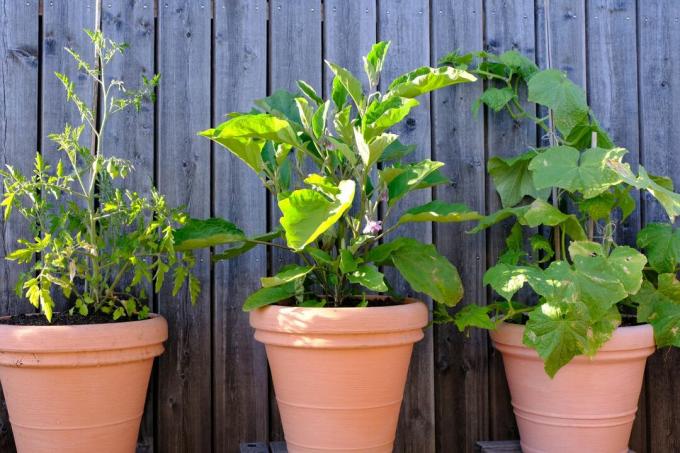
The right care
Water and fertilize
Eggplants need evenly moist soil and do not tolerate drought. It is therefore important to water the plants at least 2 to 3 times a week when it is not raining. When cultivating in a pot, it may even be necessary daily. When watering, try to keep the leaves dry to prevent fungal infection and other damage.
Tip: eggplant too mulch It's worth it because it helps keep the soil evenly moist and warm. Good materials for mulching eggplants include grass clippings or straw.
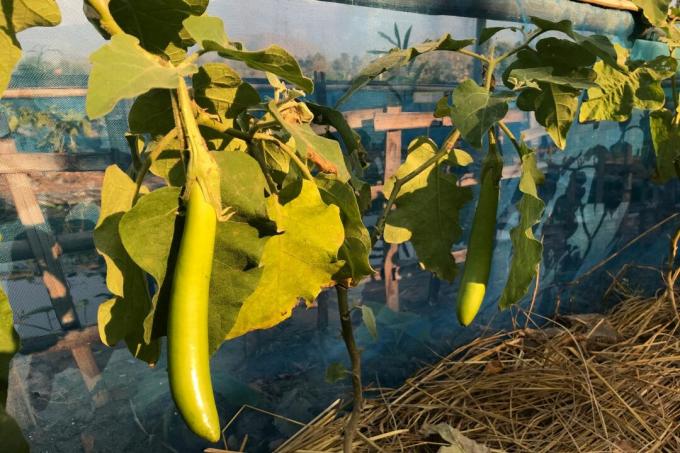
Since Thai aubergines usually have smaller fruits than normal aubergines, their nutrient requirements are also marginally lower. If the plants have already been planted in well-fertilized soil, you don't have to fertilize as often during the growing season. For example, once a month our Plantura Organic Tomato & Vegetable Fertilizer be put in the water. The liquid fertilizer is easy to use and also primarily organic and completely animal-free.

Plantura Organic Tomato & Vegetable Fertilizer
Highly effective organic liquid fertilizer
with an NK ratio of 4-5
for all types of vegetables & berries,
safe for pets and garden animals
max out
Thai eggplants do not need to be peeled in most cases, as they are small-fruited varieties, so that the plant usually has enough energy to grow all the fruits sufficiently supply. If you are growing a specimen with large fruits, it is advisable to let a maximum of 2 to 3 shoots grow. Since this thins out the plant and ventilates it better, it also reduces the risk of developing certain fungal diseases. Varieties with large fruit should also be supported.
Common diseases and pests
Unfortunately, Thai eggplants are susceptible to many diseases and pests. These include, for example aphids (Aphidoidea), spider mites (Tetranychidae), Colorado potato beetle (Leptinotarsa decemlineata), white flies (Trialeurodes vaporariorum), leaf spot disease (Cercospora melongenae) and the late blight (Phytophthora infestans). Since many of these are also typical diseases of tomatoes, you will find tips on how to recognize and combat them in our article Protect tomatoes from diseases.
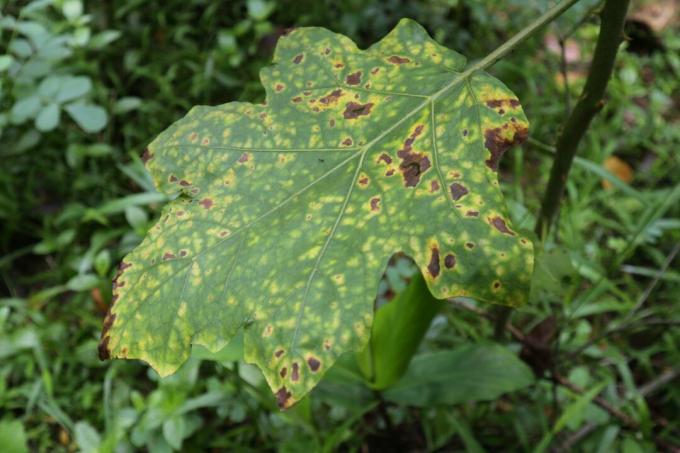
wintering
If you have grown Thai aubergines in a pot, you can try to overwinter healthy plants. To do this, place them in a bright, rather cool place in autumn where the temperatures do not fall below 15 °C. In winter, the Thai aubergines need significantly less water. Nevertheless, the substrate should not dry out completely until the plants can go outside again in May.
Harvesting and using Thai eggplants
Depending on the variety and the time of sowing, Thai aubergines can be harvested from July to autumn. Identifying the right time to harvest is not that easy. If you do it too early, the fruits are still rich in bitter substances such as solanine. However, if the fruits are harvested too late, when they are fully ripe, the numerous seeds are a problem. The optimal harvest time is when the fruits have already reached their maximum size, which is at Solanum virginianum mostly golf ball sized, and easily indented, but not yet color changing.
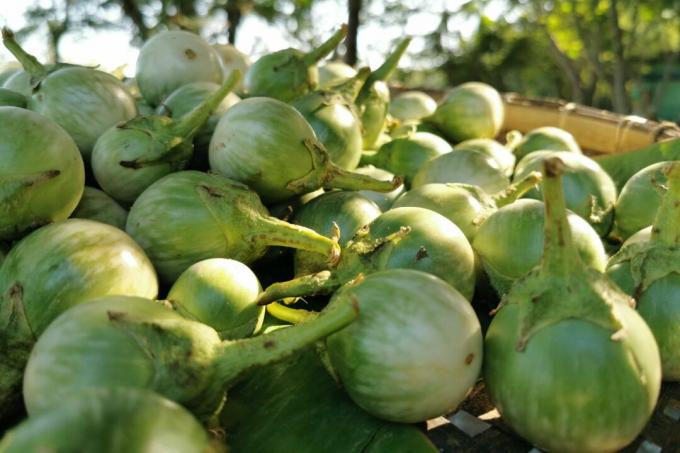
When harvesting, use a sharp knife to cut off the eggplants cleanly. This reduces the risk of the interfaces serving as entry points for pathogens.
Tip: If you accidentally harvested some unripe fruit, you can simply let them ripen in a bright place at room temperature for a few days.
Many Thai eggplant varieties can also be eaten raw when ripe. However, they can be integrated particularly well in curry dishes, where they provide a slightly bitter note.

Another, rather unknown vegetable from Asia is the tattoo (Brassica rapa convar. narinosa). It is a fast-growing leafy vegetable that is still grown in autumn and used in a variety of ways, for example in stir-fries.
...and receive concentrated plant knowledge and inspiration directly in your e-mail inbox every Sunday!



